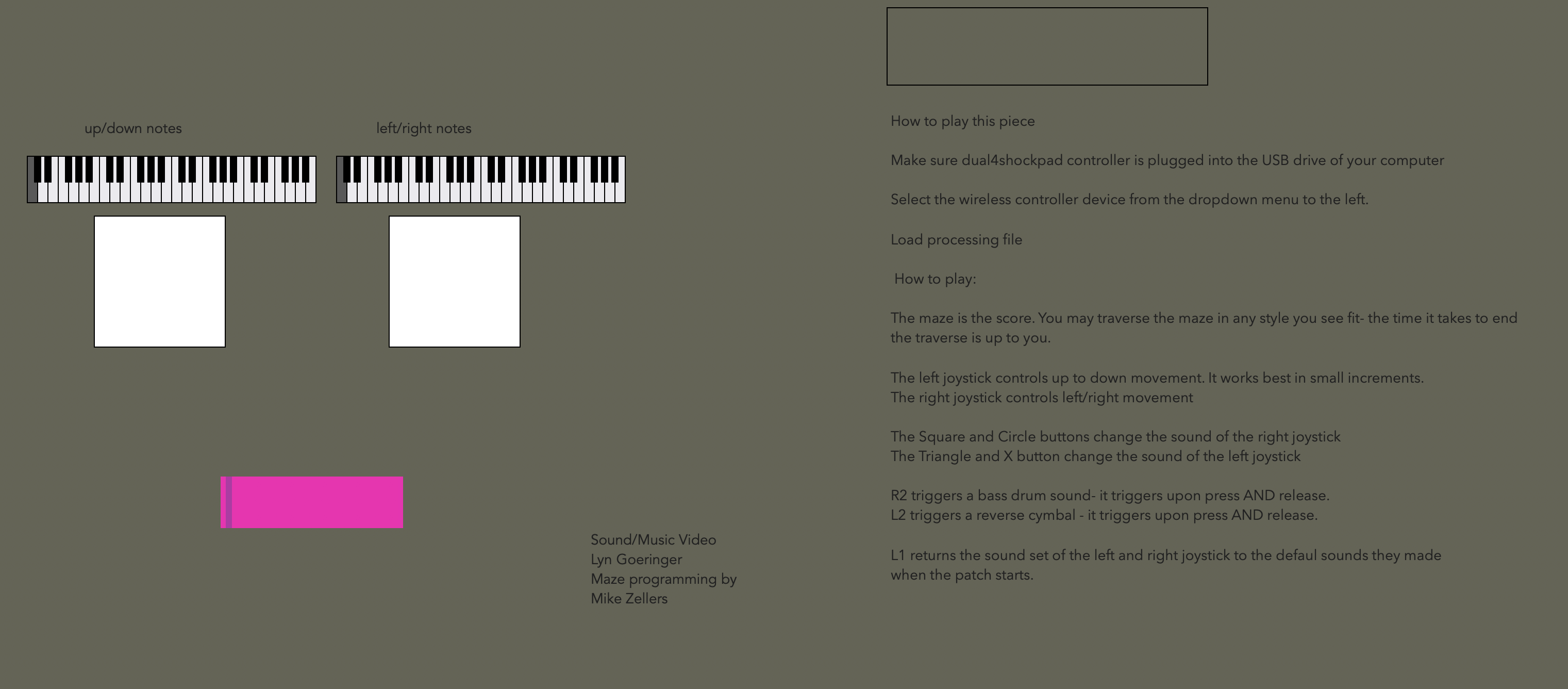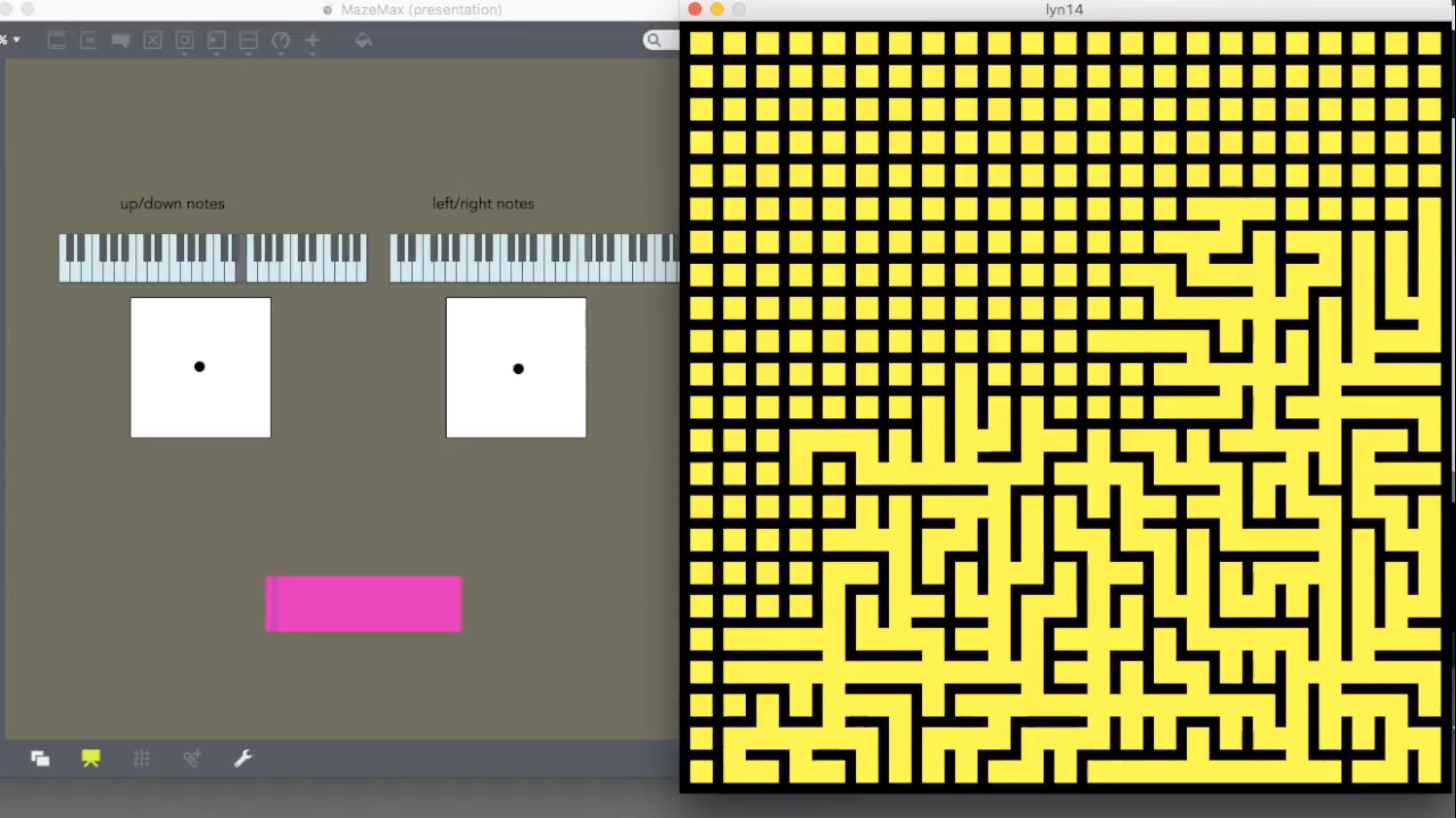Maze (2017) is a graphic score for game controller, computer, and live performer. Commissioned by Joo Won Park, and premiered at Strange Beautiful Music X by Joo Won Park.
Composer/programmer/designer: Lyn Goeringer (Max, OSC integration, and design)
Processing code: Mike Zellars
Performed by Joo Won Park
Performance Notes
This piece was designed as a graphic score for improvisation in performance. As the player navigates the maze, they are able to change sound events that occur by moving around the maze by pushing the buttons on the controller. Maze begins when the performer launches the maze in Processing, and ends when the performer reaches the end of the maze. The maze itself randomly generated, so the piece will be different each time it is performed.
The patch, and the maze itself, is designed to be presented on the screen side by side so that the audience can follow along with the score/game during performance.
When writing this piece, I was very interested in making an accessible work that could be performed by anyone. Because of this, I worked with both Max and Processing as they could be used on either Mac or PC. In addition to platform considerations, I also worked exclusively with general midi for the sounds used, so that any person could play this, regardless of the computer that was available to the them.
Technical information
This work is for a computer that can run both Max and Processing, and is performed using a PS4 game controller. The size and scale of the maze is customizable for difficulty level, and is possible to resize depending on the projection screen in the performance.
The presentation mode of the patch offers performance instructions, as well as a visualization of the buttons and movements chosen by the joystick on the right:
The work is designed to have the Processing patch of the maze overlaying the performance notes during performance and projected so that the audience can see both the performer and the visuals, as seen here.
The system uses a protocol called OSC, which allows Processing and Max to speak to each other, which is how the joystick is able to be used as a sound interface (the image on the left, which visualizes the joystick movements) and also run through the maze (the image on the right). The joystick is mapped so that the paddles control the pitch/note as well as directional travel in the maze The buttons are mapped to allow the performer to select a general midi sound during performance, and the trigger buttons allow for the performer to play either a kick drum or cymbal sound whenever they like.
